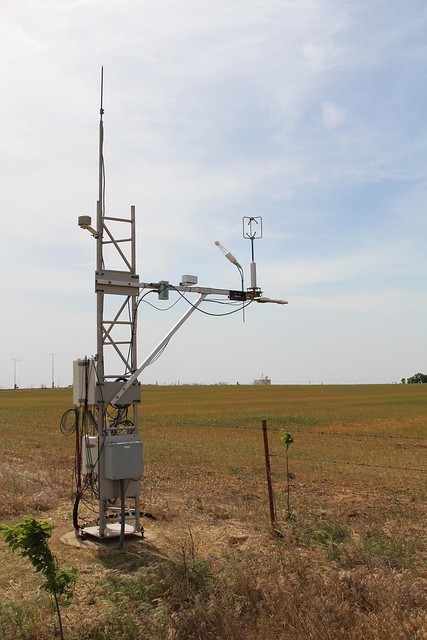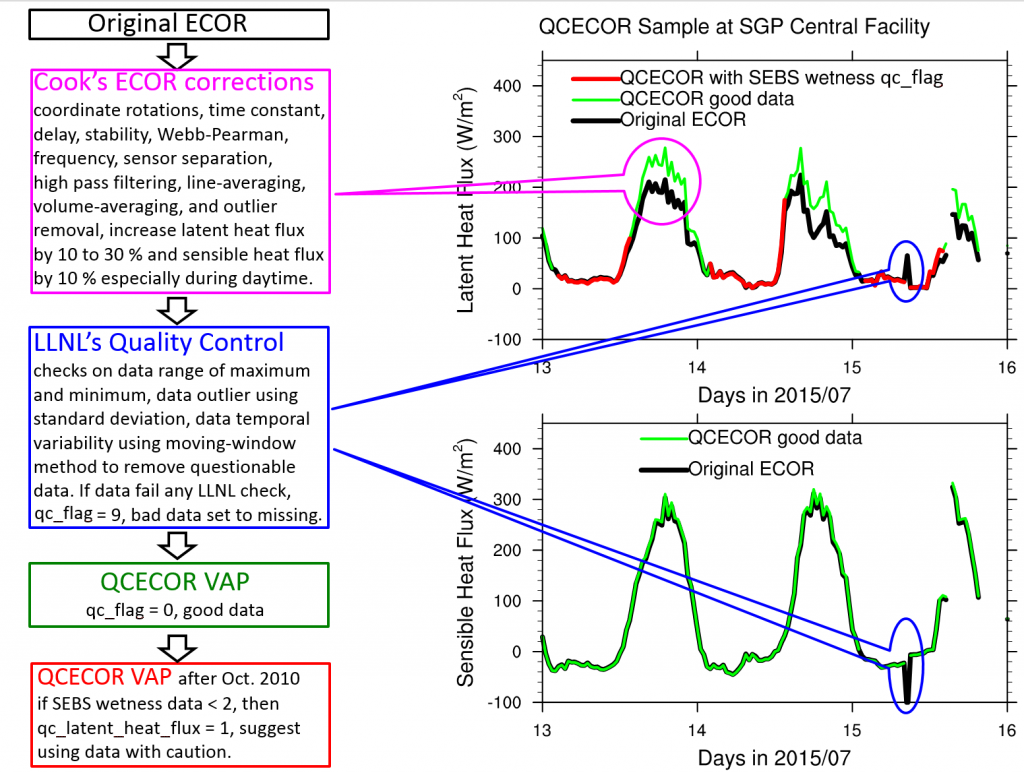Improved Quality Controlled Eddy Correlation Flux Measurement Data Extended for SGP
Published: 19 August 2019

Another year of data have been processed for the Quality Controlled Eddy Correlation (QCECOR) value-added product (VAP). This VAP provides improved surface turbulence flux measurements to the ARM user community. Data now extend from 2003 to December 2018 for all systems at the Southern Great Plains (SGP) atmospheric observatory.
ARM deploys eddy correlation flux measurement (ECOR) systems at its fixed and mobile observatories. Uncertainties exist in the original ECOR data due to instrument and measurement uncertainties or atmospheric conditions. These uncertainties in the ECOR surface turbulence fluxes hindered data usage by the user community. To improve the ECOR data, the QCECOR VAP was developed to apply eddy correlation and energy balance corrections, as well as additional quality control checks, to the ECOR data.
The QCECOR VAP improves ECOR data by applying the following quality control (QC) procedures:
- Eddy correlation corrections – Include stability, Webb-Pearman, frequency, sensor separation, filtering, line averaging, volume averaging (Cook et al. 2008; Fuehrer and Friehe 2002).
- Energy balance correction – Based on measurements from the surface energy balance system (SEBS), wetness measurements from SEBS are used to flag incorrect fluxes as a result of precipitation, dew, or frost after October 2010.
- Quality control checks – Include 1) data range check on maximum and minimum values, 2) outlier check using standard deviation, and 3) temporal variability check using moving window method.
Based on the initial analysis, these corrections generally increase the latent heat flux by 10 to 30 percent and the sensible heat flux by 10 percent from the original data, especially during the daytime, while a much smaller increase is noticed during nighttime.
The new QC checks effectively reject questionable data points due to instrument or measurement uncertainties. More information about QCECOR and its comparison with the turbulent fluxes measured from ARM’s Energy Balance Bowen Ratio (EBBR) Stations can be found in Tang et al. (2019).
Efforts to release the QCECOR VAP to production for automatic updating continue. This will make QCECOR data available more routinely.

Users can access the data set from the ARM Data Center. (Go here to create an account to download the data.) To share your experience using the data or to ask questions, contact Shuaiqi Tang, Cheng Tao, or Shaocheng Xie.
QCECOR data can be referenced as https://doi.org/10.5439/1097546.
References:
Cook BD, PV Bolstad, JG Martin, FA Heinsch, KJ Davis, W Wang, AR Desai, and RM Teclaw. 2008. “Using Light-Use and Production Efficiency Models to Predict Photosynthesis and Net Carbon Exchange During Forest Canopy Disturbance.” Ecosystems, 11(1), 10.1007/s10021-007-9105-0.
Fuehrer PL and CA Friehe. 2002. “Flux Corrections Revisited.” Boundary-Layer Meteorology, 102(3), 10.1023/A:1013826900579.
Tang S, S Xie, M Zhang, Q Tang, Y Zhang, S Klein, D Cook, and R Sullivan. 2019. “Differences in Eddy‐Correlation and Energy‐Balance Surface Turbulent Heat Flux Measurements and Their Impacts on the Large‐Scale Forcing Fields at the ARM SGP Site.” Journal of Geophysical Research: Atmospheres, 124(6), 10.1029/2018JD029689.
Keep up with the Atmospheric Observer
Updates on ARM news, events, and opportunities delivered to your inbox
ARM User Profile
ARM welcomes users from all institutions and nations. A free ARM user account is needed to access ARM data.


















